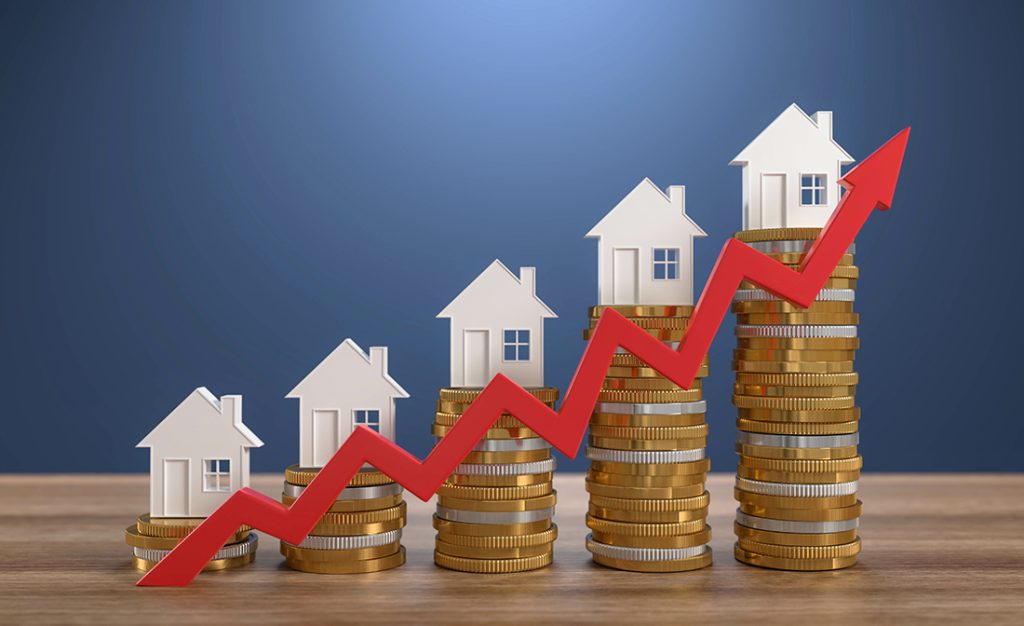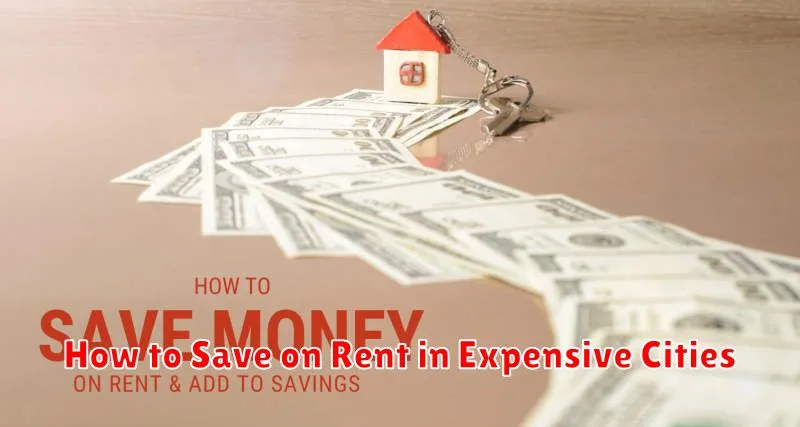The prospect of saving thousands of dollars on your largest monthly expense – your mortgage – is a compelling one. As we look ahead to 2025, market conditions, personal financial situations, and evolving lending technologies could make it an opportune time for many homeowners to refinance their mortgages. But what exactly does refinancing entail, and how can you navigate the process to ensure you reap significant savings?
This comprehensive guide will break down everything you need to know about refinancing your mortgage in 2025, from understanding the core concept to the step-by-step application process, potential costs, and crucial considerations for the year ahead.
Understanding Mortgage Refinancing: A Core Concept
At its heart, mortgage refinancing means replacing your existing mortgage with a new one. It’s essentially taking out a new loan to pay off your old loan. While this might sound like a simple swap, the terms of the new loan – such as the interest rate, repayment period, or even the loan type – can be significantly different, leading to various financial benefits.
Think of it like upgrading your smartphone. You’re still getting a phone (a mortgage), but the new model (the refinanced loan) might have better features (lower interest rate), a longer or shorter contract (loan term), or allow you to access some of its value (cash-out).
Why Consider Refinancing Your Mortgage in 2025? (And Save Thousands)
The primary motivation for refinancing is almost always financial gain. By strategically replacing your old loan, you can unlock substantial savings and achieve important financial goals. Here are the most common reasons homeowners consider refinancing:
- Secure a Lower Interest Rate: This is the quintessential reason for refinancing. Even a seemingly small reduction in your interest rate can translate into tens of thousands of dollars saved over the life of the loan.
- Example: On a $300,000 mortgage, reducing your interest rate from 7% to 6% could save you approximately $190 per month, totaling over $68,000 over 30 years.
- Reduce Your Monthly Mortgage Payment: A lower interest rate, a longer loan term (though this often means paying more interest over time), or a combination of both can significantly decrease your monthly outlay, freeing up cash flow for other expenses or investments.
- Shorten Your Loan Term: If you’re in a stronger financial position, you might refinance from a 30-year mortgage to a 15-year mortgage. While your monthly payments will likely increase, you’ll pay off your home faster, accrue less interest overall, and build equity more quickly.
- Cash-Out Refinance: This option allows you to tap into your home equity. You take out a new mortgage for more than you currently owe, and you receive the difference in cash. This cash can be used for:
- Home improvements and renovations.
- Debt consolidation (paying off high-interest credit card debt or personal loans).
- Funding education or other significant expenses.
- Important Note: While appealing, a cash-out refinance increases your loan principal and extends your debt. Use this option judiciously.
- Switch Loan Types:
- From Adjustable-Rate Mortgage (ARM) to Fixed-Rate: If you have an ARM and interest rates are projected to rise, switching to a fixed-rate mortgage can provide stability and predictability in your monthly payments.
- From Fixed-Rate to ARM: In a declining interest rate environment, an ARM might offer a lower initial rate, but carries the risk of future rate increases. This is a less common reason to refinance in 2025 unless there’s a strong belief in sustained rate drops.
- Remove Private Mortgage Insurance (PMI): If your home’s value has increased significantly or you’ve paid down enough of your principal, you might be able to refinance into a new loan without PMI, provided your loan-to-value (LTV) ratio is 80% or less. This directly reduces your monthly housing cost.
- Consolidate Other Debts: By using a cash-out refinance, you can combine higher-interest debts (like credit cards, personal loans, or car loans) into your lower-interest mortgage. This simplifies your payments and can drastically reduce the total interest paid, but it also converts unsecured debt into secured debt against your home.
Is Refinancing Right for You in 2025? Key Considerations
While the potential savings are attractive, refinancing isn’t for everyone. Before you dive in, consider these critical factors:
- Your Current Interest Rate vs. Potential New Rate: Is the interest rate offered on a new loan significantly lower than your current rate? A marginal difference might not justify the closing costs.
- The Break-Even Point: Refinancing involves closing costs (appraisal fees, origination fees, title insurance, etc.). You need to calculate how long it will take for your monthly savings to offset these upfront costs.
- Calculation: Total Closing Costs / Monthly Savings = Months to Break Even.
- If you plan to sell your home before you reach your break-even point, refinancing might not be financially beneficial.
- Your Credit Score: A strong credit score (typically 740 or higher) is crucial for securing the best interest rates. Lenders view borrowers with higher scores as less risky. If your score has improved since you first took out your mortgage, you’re in a better position.
- Your Home Equity and Loan-to-Value (LTV): Lenders generally prefer an LTV of 80% or less (meaning you have at least 20% equity in your home) for the most favorable terms and to avoid PMI. For a cash-out refinance, most lenders cap the LTV at 80% to 90%.
- Your Financial Stability: Lenders will scrutinize your income, debt-to-income (DTI) ratio, and employment history to ensure you can comfortably afford the new payments.
- Your Long-Term Goals: Do you plan to stay in your home for several more years? Is your priority to lower monthly payments, pay off your home faster, or access cash? Your goals will dictate the best type of refinance.
- The Current Mortgage Market: While we’ll discuss 2025 trends below, understanding the prevailing interest rate environment is paramount. Rates can fluctuate, so timing can play a role.
Types of Mortgage Refinancing
The type of refinance you choose will depend on your specific financial goals:
-
Rate-and-Term Refinance:
- Purpose: To secure a lower interest rate, change the loan term (e.g., from 30 years to 15 years), or both.
- Outcome: Your principal loan amount remains largely the same (minus any closing costs rolled in), but your interest rate and/or payment schedule changes. You do not receive cash back.
- Benefit: The most straightforward way to reduce interest costs or adjust your payment schedule without touching your home equity.
-
Cash-Out Refinance:
- Purpose: To convert a portion of your home equity into cash.
- Outcome: You take out a new mortgage for more than your current loan balance. The difference is given to you in a lump sum.
- Benefit: Provides liquid funds for significant expenses, debt consolidation, or investments, often at a lower interest rate than personal loans or credit cards.
- Risk: Increases your total debt secured by your home.
-
Streamline Refinance (FHA, VA, USDA):
- Purpose: To simplify the refinancing process for government-backed loans.
- Characteristics: Often requires less paperwork, no appraisal, and sometimes no credit check. The primary goal is to lower your interest rate on an existing FHA, VA, or USDA loan.
- Benefit: Faster, easier, and typically less expensive than a traditional refinance for eligible borrowers.
- Requirements: You must already have an FHA, VA, or USDA loan, and the new loan must result in a net tangible benefit (e.g., lower payment, shorter term).
The Mortgage Refinancing Process in 2025: A Step-by-Step Guide
While technology might streamline some aspects, the core refinancing process remains consistent. Here’s what to expect:
-
Define Your Goals:
- What do you hope to achieve? Lower payment, cash out, shorter term, remove PMI? Having clear goals will help you choose the right refinance type and lender.
-
Review Your Finances:
- Check Your Credit Score: Obtain a free copy of your credit report from AnnualCreditReport.com. Address any errors and work to improve your score if needed.
- Gather Financial Documents: Start collecting pay stubs, W-2s, tax returns (last two years), bank statements (last two months), and statements for any existing debts.
- Estimate Your Home’s Value: Use online tools or consult a local real estate agent for a rough estimate. This helps determine your equity.
-
Shop for Lenders:
- Don’t Settle for Your Current Lender: While convenient, they may not offer the best rates. Contact at least 3-5 different lenders (banks, credit unions, online lenders, mortgage brokers).
- Compare Loan Estimates (LEs): Lenders are required to provide you with a Loan Estimate within three business days of application. This document details the interest rate, monthly payment, and all closing costs. Compare these thoroughly.
- Ask Questions: Inquire about all fees, lender credits, and potential rate locks.
-
Submit Your Application:
- Once you’ve chosen a lender, you’ll complete a formal application (typically online or with a loan officer).
- Provide all requested documentation promptly. Delays in providing documents can slow down the process.
-
Underwriting:
- The lender’s underwriting team will review all your financial information, credit history, and property details to assess your eligibility and risk. They may request additional documents or clarification.
-
Property Appraisal and Title Search:
- Appraisal: An independent appraiser will assess your home’s current market value. This is crucial for determining your LTV and how much you can borrow.
- Title Search: A title company will conduct a search to ensure there are no liens or claims against your property that could prevent a clear transfer of title.
-
Closing Disclosure (CD):
- At least three business days before closing, you’ll receive a Closing Disclosure. This document finalizes all the terms and costs of your new loan. Compare it carefully to your initial Loan Estimate.
-
Closing:
- You’ll sign numerous documents at the closing table, legally binding you to the new mortgage terms. This is where you pay any remaining closing costs (unless rolled into the loan).
- Your new mortgage takes effect, and your old mortgage is paid off.
Costs Associated with Refinancing
Refinancing is not free. While you stand to save money long-term, there are upfront costs, collectively known as closing costs, which typically range from 2% to 5% of the loan amount. These can include:
- Lender Fees:
- Origination Fee: A fee charged by the lender for processing the loan, often 0.5% to 1% of the loan amount.
- Underwriting Fee: Covers the cost of evaluating your loan application.
- Application Fee: Sometimes charged upfront.
- Discount Points: Optional fees paid to the lender to "buy down" your interest rate. Each point typically costs 1% of the loan amount.
- Third-Party Fees:
- Appraisal Fee: Cost for the professional assessment of your home’s value.
- Title Insurance: Protects both you and the lender from future title disputes.
- Title Search Fee: Cost to research your home’s ownership history.
- Escrow Fees: Fees for the escrow company that handles the closing process.
- Attorney Fees: If required in your state.
- Survey Fee: If required to verify property lines.
- Credit Report Fee: Cost to pull your credit history.
- Recording Fees: Charged by your local government to record the new mortgage.
- Prepaid Expenses:
- Property Taxes: Often, lenders require you to prepay a certain number of months of property taxes into an escrow account.
- Homeowner’s Insurance: Similar to property taxes, a portion of your annual premium may be required upfront.
How to Pay for Closing Costs:
- Pay Upfront: You pay these fees out-of-pocket at closing. This results in a lower principal balance on your new loan.
- Roll into the Loan: The closing costs are added to your new loan amount. This means less cash needed upfront, but you’ll pay interest on these costs over the life of the loan.
- Lender Credits: Some lenders may offer a slightly higher interest rate in exchange for covering some or all of your closing costs. This is often called a "no-closing-cost" refinance, but remember you’re still paying for it indirectly through the higher rate.
Navigating the 2025 Mortgage Market
Predicting future interest rates and economic conditions with certainty is impossible, but we can look at potential influences for 2025:
- Federal Reserve Policy: The Federal Reserve’s stance on inflation and its actions regarding the federal funds rate will continue to be a primary driver of mortgage interest rates. If inflation remains elevated, the Fed might keep rates higher. If inflation cools, rate cuts could make refinancing more attractive.
- Economic Growth: A robust economy generally correlates with higher interest rates as demand for credit increases. A slowing economy could see rates stabilize or decline.
- Housing Market Dynamics: Home values, housing supply, and buyer demand will influence appraisal values and the overall health of the mortgage market.
- Technological Advancements: Expect even more streamlined online application processes, AI-driven underwriting, and digital closing options, potentially speeding up the process and reducing some administrative costs.
- Regulatory Environment: Any new housing or lending regulations introduced by the government could impact mortgage products and processes.
Key Advice for 2025: Remain agile and informed. Monitor economic indicators, follow reputable financial news sources, and be prepared to act when favorable rates emerge. Don’t chase the absolute "bottom" of the market; instead, focus on securing a rate that meets your financial goals and provides significant savings.
Potential Pitfalls and How to Avoid Them
Even with the best intentions, refinancing can lead to disadvantages if not approached carefully:
- Paying Excessive Closing Costs: Always compare Loan Estimates from multiple lenders. Don’t be afraid to negotiate fees.
- Extending Your Loan Term Unnecessarily: If you’re 10 years into a 30-year mortgage and refinance back into a new 30-year mortgage, you’ve effectively extended your debt for another decade, potentially paying significantly more interest over the long run, even with a lower rate. Aim for a similar or shorter term if possible.
- Ignoring the Break-Even Point: Refinancing only makes financial sense if you stay in the home long enough for your savings to recoup the closing costs.
- Over-Leveraging with a Cash-Out Refinance: While tempting, taking out too much equity can put you at risk if home values decline or if you face financial hardship. Treat your home equity as a long-term asset, not an ATM.
- Negative Impact on Your Credit Score: Each time you apply for a loan, a hard inquiry appears on your credit report, which can temporarily lower your score. While multiple mortgage inquiries within a short period (typically 14-45 days) are often grouped as one, be mindful of excessive applications.
- Predatory Lending Practices: Be wary of lenders promising unusually low rates without transparent fees, pressuring you into decisions, or advising you to lie on your application. Stick with reputable, well-reviewed lenders.
Alternatives to Refinancing
Refinancing isn’t the only way to manage your mortgage or access home equity. Consider these alternatives:
- Home Equity Line of Credit (HELOC): A revolving line of credit secured by your home equity. You can borrow, repay, and borrow again up to a certain limit.
- Pros: Flexible, interest-only payments during the draw period, generally lower interest rates than credit cards.
- Cons: Variable interest rates, can be tempting to overspend.
- Home Equity Loan (Second Mortgage): A lump-sum loan with a fixed interest rate and fixed repayment schedule, also secured by your home equity.
- Pros: Predictable payments, fixed interest rate.
- Cons: Not flexible for ongoing needs, separate payment from your primary mortgage.
- Mortgage Recasting/Re-Amortization: If you’ve made a large lump-sum payment on your mortgage (e.g., from an inheritance or bonus), some lenders will allow you to "recast" your loan. They recalculate your monthly payments based on the new, lower principal balance, without changing your interest rate or loan term.
- Pros: Lower monthly payments without the closing costs of a refinance.
- Cons: Not all lenders offer this, doesn’t change your interest rate.
- Making Extra Payments: Simply making additional principal payments on your existing mortgage can significantly reduce the total interest paid and shorten your loan term, often with minimal effort.
Conclusion: Plan Your Refinance for 2025 Strategically
Refinancing your mortgage in 2025 has the potential to save you thousands of dollars and significantly improve your financial standing. Whether you’re aiming for a lower monthly payment, a shorter loan term, or need to access your home equity, understanding the process, costs, and market dynamics is paramount.
Start by clearly defining your goals, diligently shopping for the best rates and terms, and carefully evaluating the break-even point. Stay informed about economic trends and lender offerings in 2025. By approaching refinancing with a strategic mindset, you can successfully navigate the process and unlock substantial savings, putting you in a stronger financial position for years to come.
Disclaimer: This article provides general information and should not be considered financial advice. Mortgage rates and market conditions are subject to change. It is recommended to consult with a qualified financial advisor and multiple mortgage lenders to assess your individual situation and make informed decisions.



